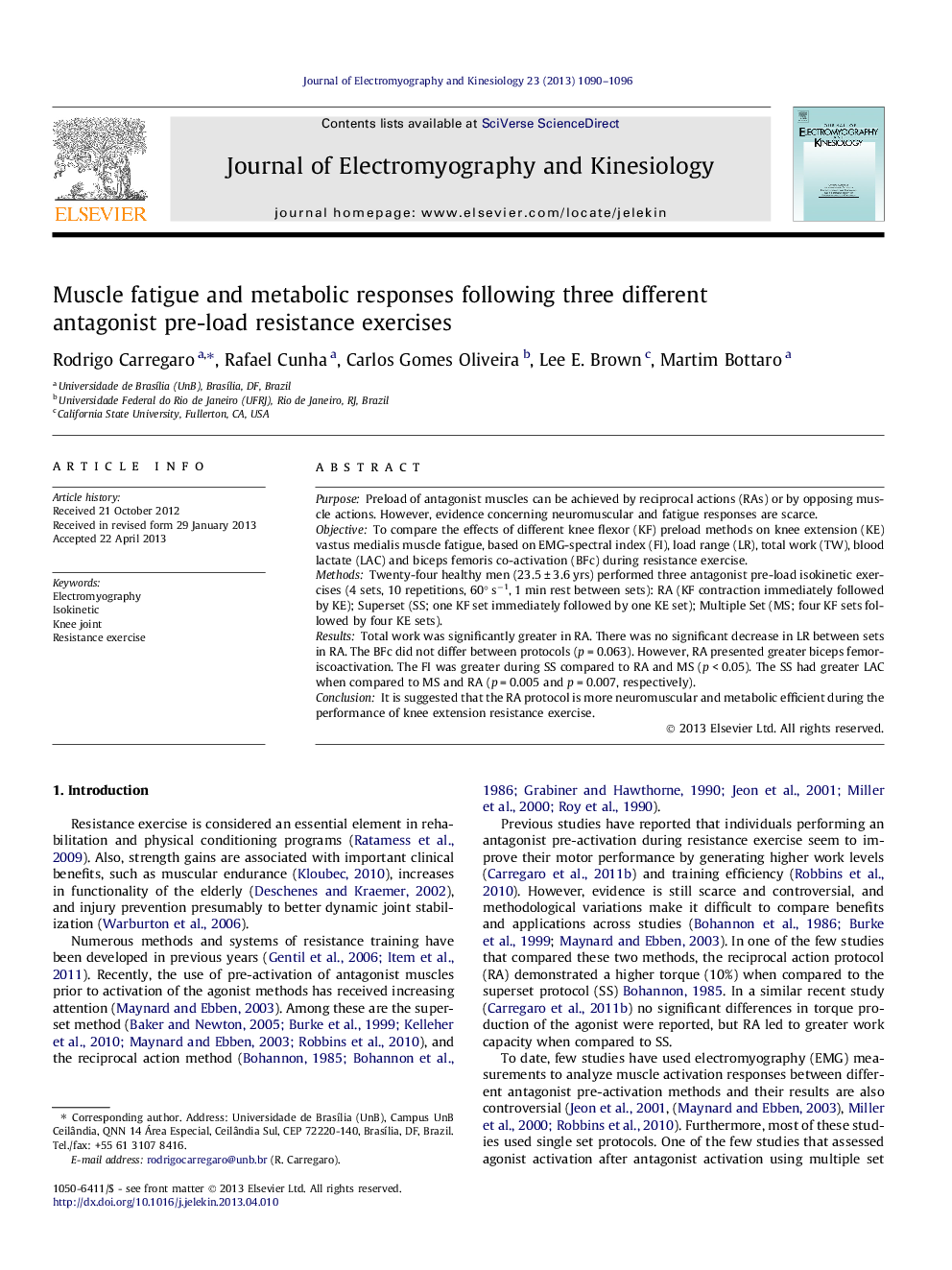| Article ID | Journal | Published Year | Pages | File Type |
|---|---|---|---|---|
| 6210529 | Journal of Electromyography and Kinesiology | 2013 | 7 Pages |
PurposePreload of antagonist muscles can be achieved by reciprocal actions (RAs) or by opposing muscle actions. However, evidence concerning neuromuscular and fatigue responses are scarce.ObjectiveTo compare the effects of different knee flexor (KF) preload methods on knee extension (KE) vastus medialis muscle fatigue, based on EMG-spectral index (FI), load range (LR), total work (TW), blood lactate (LAC) and biceps femoris co-activation (BFc) during resistance exercise.MethodsTwenty-four healthy men (23.5 ± 3.6 yrs) performed three antagonist pre-load isokinetic exercises (4 sets, 10 repetitions, 60° sâ1, 1 min rest between sets): RA (KF contraction immediately followed by KE); Superset (SS; one KF set immediately followed by one KE set); Multiple Set (MS; four KF sets followed by four KE sets).ResultsTotal work was significantly greater in RA. There was no significant decrease in LR between sets in RA. The BFc did not differ between protocols (p = 0.063). However, RA presented greater biceps femoriscoactivation. The FI was greater during SS compared to RA and MS (p < 0.05). The SS had greater LAC when compared to MS and RA (p = 0.005 and p = 0.007, respectively).ConclusionIt is suggested that the RA protocol is more neuromuscular and metabolic efficient during the performance of knee extension resistance exercise.
